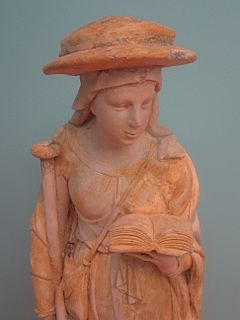Saint Victor, or Vittre, of Arcies, or Arcis, in Champagne, Anchoret and Confessor
In the Seventh Age.
He was of noble parentage in the diocess of Troyes in Champagne, educated under strict discipline in learning and piety, and a saint from his cradle. In his youth, prayer, fasting and alms-deeds were his chief delight, and, embracing an ecclesiastical state, he took orders; but the love of heavenly contemplation being always the prevalent inclination in his soul, he preferred close retirement to the mixed life of the care of souls. In this choice the Holy Ghost was his director, for he lived in continual union with God by prayer and contemplation, and seemed raised above the condition of this mortal life, and almost as if he lived without a body. God glorified him by many miracles; but the greatest seems to have been the powerful example of his life.
We have two pious panegyrics made upon this saint by St. Bernard, who says: “Now placed in heaven, he beholds God clearly revealed to him, swallowed up in joy, but not forgetting us. It is not a land of oblivion in which Victor dwells. Heaven doth not harden or straiten hearts, but it maketh them more tender and compassionate; it doth not distract minds, nor alienate them from us; it doth not diminish, but it increaseth affection and charity: it augmenteth bowels of piety. The angels, although they behold the face of their Father, visit, run, and continually assist us; and shall they now forget us who were once among us, and who once suffered themselves what they see us at present labouring under? No: I know the just expect me till thou renderest to me my reward. Victor is not like that cup-bearer of Pharaoh, who could forget his fellow-captive. He hath not so put on the stole of glory himself, as to lay aside his pity, or the remembrance of our misery.”
St. Victor died at Saturniac, now called Saint-Vittre, two leagues from Arcies in the diocess of Troyes. A church was built over his tomb at Saturniac; but in 837 his relics were translated thence to the neighbouring monastery of Montier-Ramey, or Montirame, so called from Arremar, by whom it was founded in 837. It is situated four leagues from Troyes, of the Benedictin Order, and is still possessed of this sacred treasure. At the request of these monks, St. Bernard composed an office of St. Victor, extant in his works, (ep. 312. vet. ed. seu 398. nov. edit.) See the two sermons of St. Bernard on Saint Victor, and his ancient life in Henschenius and others: from which it appears that this saint never was a monk, never having professed any monastic Order, though he led an eremitical life.
 This article incorporates text from this source, which is in the public domain .
This article incorporates text from this source, which is in the public domain . This article incorporates text from this source, which is in the public domain .
This article incorporates text from this source, which is in the public domain . This article incorporates text from this source, which is in the public domain .
This article incorporates text from this source, which is in the public domain .










